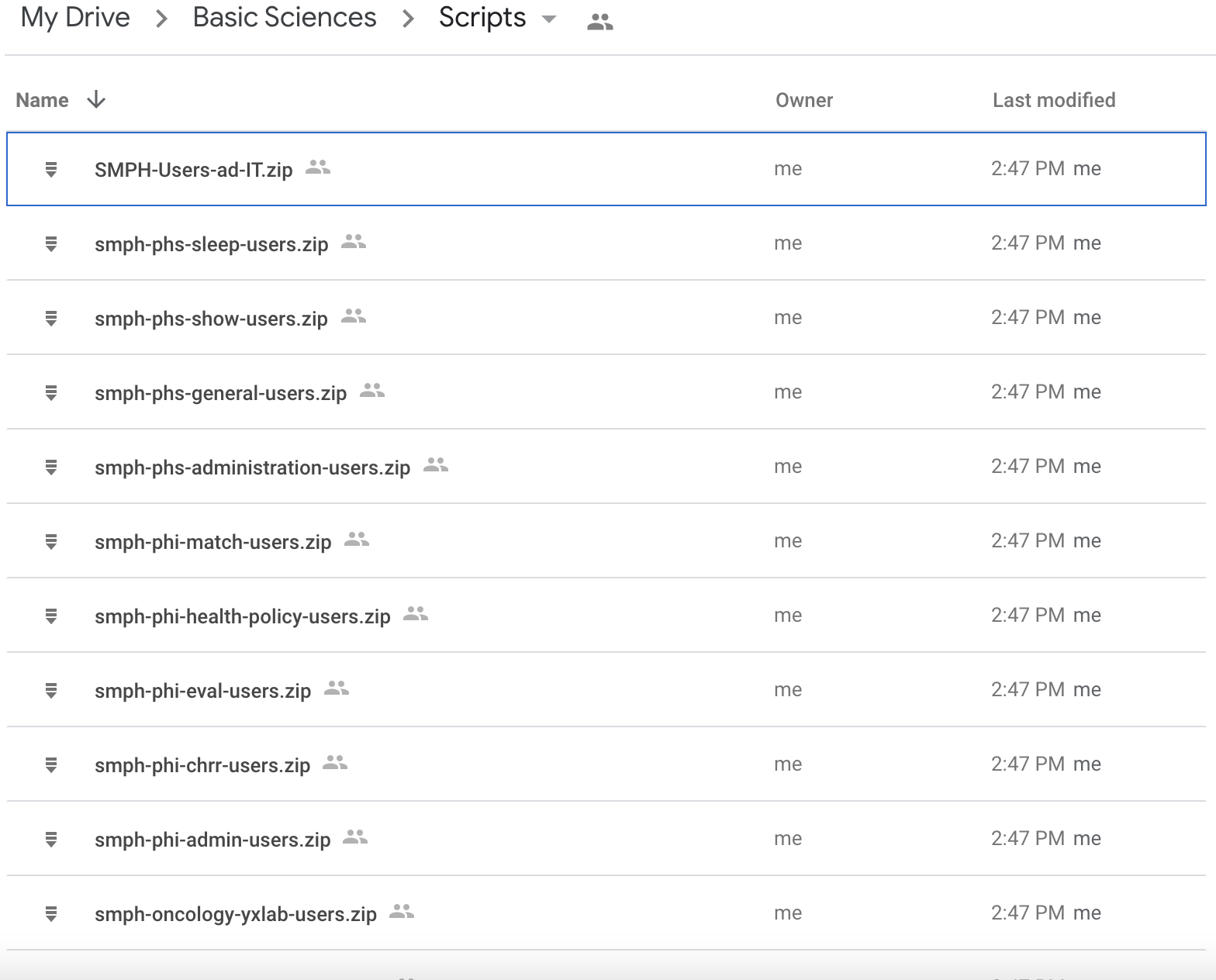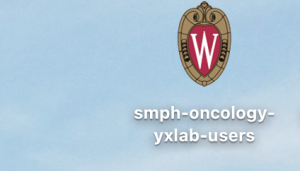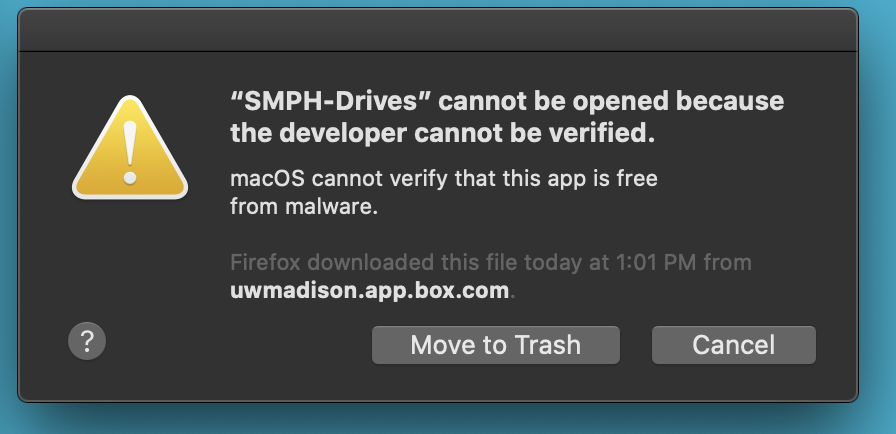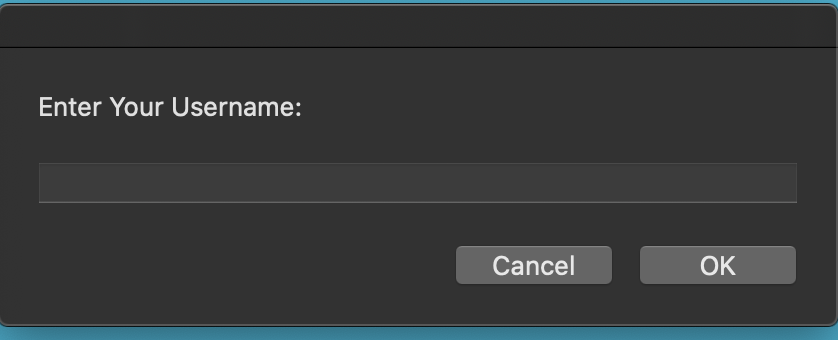This page was moved to kb.wisc.edu/134032
Click in the link above if you are not automatically redirected in 10 seconds.
Click in the link above if you are not automatically redirected in 10 seconds.
ON EITHER A PC OR A MAC, YOU MUST FIRST BE CONNECTED TO THE UNIVERSITY GLOBAL PROTECT VPN SERVICE (Unless You Are On A Campus Network):
Please see this document for more information if you do not have the VPN software or need assistance connecting: https://kb.wisc.edu/helpdesk/90370
Before using the script, we recommend performing an anti-virus scan first. For home computers, Malwarebytes is the best option and is available for free here: https://www.malwarebytes.com/.
Connecting to your network drives (Home/NetID "H", Private/Lab "P", Shared/Dept "S") (Shared Drive for CRB/Oncology/Neurosci only)
From a Mac:
- After connecting to the UW GlobalProtect VPN; you will need to put the lab script file on your home computer's desktop.
- To obtain the script file, press on the google link here and sign in with your NetID@wisc.edu followed by your Net ID when prompted: (NOTE - The download button is in the upper right corner)
https://drive.google.com/drive/folders/1d84GnghlZ6xQ1_4p5AyqlwQDTmgV6Lwf?usp=sharing
Right-click on the script file that belongs to your lab and select download. It should be labeled by department and P.I. initials. - Save the file. Your browser (Chrome, Firefox, Safari, etc) should start downloading it. Once it's finished, open it from the normal location your files download to. It will extract the zip file.
- Once you have extracted the file, move it to your home computer's desktop. Then double-click on the file.
- You will likely get a message saying that it cannot be opened, something similar to this one:
- Press "Cancel". Double-click on the file once more, and when you get the cannot be opened message, once again click "Cancel".
- Next, press on the Apple menu and press "System Preferences"
- Press on "Security & Privacy"
- Under the "General" tab, in the bottom right, there should be an "Open Anyway" or "Allow" button. If you do not see it, close out of the Security pane, try to re-open the SMPH-Drives icon, and go through the same steps again. After clicking "Open Anyway" you may get another warning message:
- Click "Open". You will get a prompt asking if you have scanned for viruses, click OK
- You will get a box asking you to enter your Username. This is your UW NetID. Following it will be a box asking for your password (your UW NetID password).
- If entered in correctly, wait a few minutes. You will now see a series of prompts come up to allow access to drives and printers. You need to click allow or OK on each of these. You should eventually see two or three drives mounted onto your desktop. They should appear as grey hard disk icons. Shared Drive users should have one for your UW NetID (Home; "H" Drive), one for your lab (Private; "P" Drive), and may have one for your department (Shared; "S" Drive) (if your department has a drive). NOTE* - Research Drive users will just have a Home (H) (Net ID) Drive, and a Lab P.I. Net ID drive (P) (the lab's shared drive).
- If you do not see the drives, please RESTART the Mac, then reconnect to the UW GlobalProtect VPN, and finally double-click the lab drives script file again and sign in. Often, the first time you run the script it will not work, but subsequent attempts will, following a restart. Remember to be patient too, as the drives can take anywhere from 15 seconds to 2-3 minutes to appear. Also, make sure to go under the "Finder" menu > Preferences > "General" tab and have both hard disks and connected servers checked.
- The drives are designed to disappear when you log off your home computer, restart, fall asleep, or power off. You will need to again reconnect to the UW GlobalProtect VPN and run the script file. If your computer stays on during the day as you work though, the drives will be there and you can save to them like you would a normal folder on your computer. You can drag and drop files to them as well, again like a normal computer folder.








